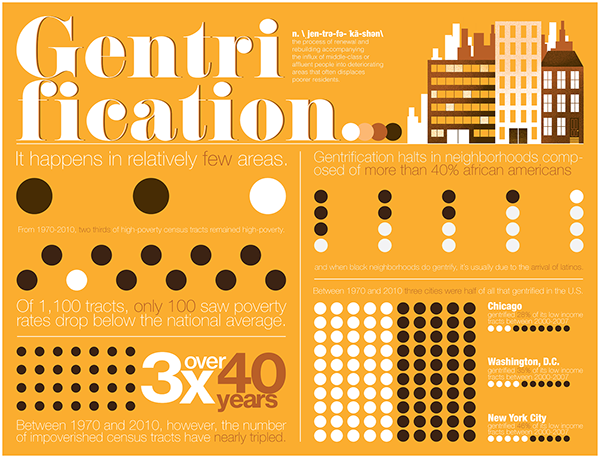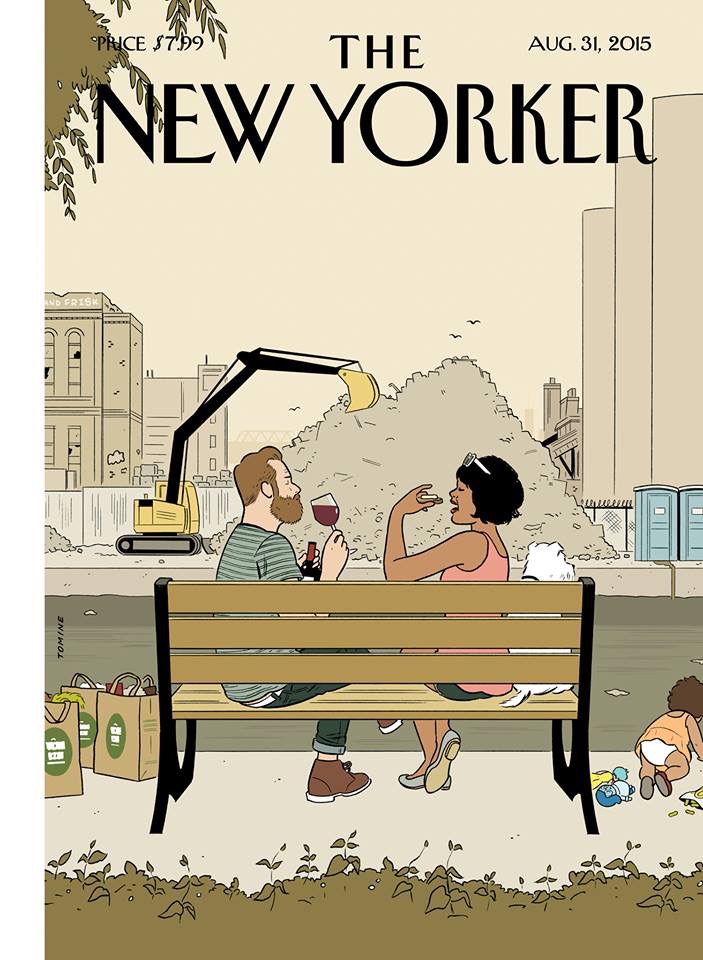All About Gentrification: Some Basic Information
What is Gentrification?
Gentrification is a a term referring to the arrival of wealthier individuals in an existing urban district (many times those with poor living conditions) that bring increased rents and property values to the environment and changes in the overall area’s culture and neighborhood. It usually has a negative connotation, implying a displacement of poor communities by rich outsiders.
The term “gentrification” was originally coined by British sociologist Ruth Glass in 1964 when referring to the alterations she observed in social structures and housing markets in certain areas of London.
The Purpose of This Page: studying how gentrification has shaped neighborhoods of New York City in both the past and the present.
- Define gentrification and examine why this is a complicated idea
-
Examine what has and is occurring in these neighborhoods. A study of past gentrification done on West Village, Manhattan, and a study of present gentrification done on Bedford-Stuyvesant, Brooklyn.
-
Examine what the issues associated with gentrification are and changes in these neighborhoods, using support from critics of this process
-
Present possible counterarguments and discuss the associated pros and cons
-
Investigate who is hurt by this process and who is helped
Although the idea of gentrification varies across districts and may not be so clear-cut, it is usually characterized by several changes:
- Demographics – there is an increase in median income and a decrease in racial minority groups. Neighborhoods that have gentrified since 2000 recorded population increases with average of 4.3% increase of non-Hispanic white residents.A reduction in household size also is apparent, as young singles and couples replace low-income families.
- Real Estate Markets – dramatic increases in rent and home prices, evictions, conversion of rental units to condominiums, and development of luxury housing
- Land Use – there is a decline in industrial jobs with an upsurge of office/multimedia land usage and high-end housing, retail, and restaurants
- Culture and Character – new trends on what is attractive and desirable for a community, including criterion for architecture, landscaping, public behavior, noise, and nuisance.

How to Gentrify a Neighborhood:
Its History – The Stages of Gentrification:
- First wave (1968 – 1973) – as a sporadic process, gentrification mainly takes place in small neighborhoods of the northeastern United States and Western Europe.
- First transition period (1974 – 1978) – in New York and other major cities, developers and investors take advantage of low prices in the real estate market to consume large portions of generalized downtrodden neighborhoods.
- Second wave (1979 – 1988) – gentrification sets forth its anchor as it becomes an established practice in city neighborhoods that were recently invested in. In N

Gentrification Takes Over Gowns Canal, Brooklyn Source: The New Yorker Magazine (2015) – Cover by Adrian Tomine ew York City, residential gentrification usually took place in art communities, which allowed a smooth flow of capital into areas like SoHo, Tribeca, and the Lower East Side. Intense political struggles begin as poorer residents are displaced from their homes.
- Second transition period (1989 – 1993) – recessions and poor national economy constrict the flow of capital into gentrifying neighborhoods, prompting some to assume a “degeneration” or reversal of the process is taking place.
- Third wave (1994 – present) – many neighborhoods thought to be degenerating pick up speed and continue gentrifying while other areas join in on the process for the first time. This tide is linked to more large-scale capital than ever before, as large developers rework entire neighborhoods, often from state funding.
Cited from: “The Changing State of Gentrification” by Jason Hackworth and Neil Smith (2000)
50 Years of Gentrification Timeline:
Source: NextCity.org – “Gentrification Timeline”
The Roots of Gentrification in New York City:
The Acceleration of Gentrification:
Gentrification has increased significantly in recent years as growing numbers of Americans opted to pursue urban lifestyles.

Survey data taken from the US Census of 2000.
New York City Maps of Gentrification:
1990 Census – 2000 Census
2000 Census – Present
Source: Governing.com: “New York City Gentrification Maps and Data”
An Extra Resource Picture to help guide you through Manhattan’s neighborhoods:
Next: Analyzing Both Sides – The Pros and Cons of Gentrification






